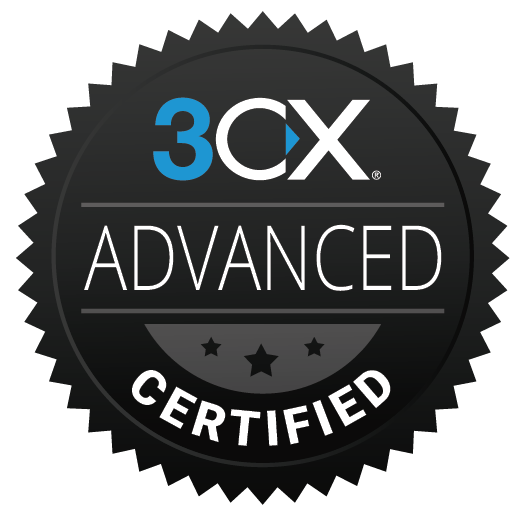There are many difficult decisions to make as a business owner. From finding the right vendors to finding and keeping the right employees, there is never a shortage of headaches to deal with. Taking your business and migrating to the cloud may seem like another difficult decision to add to your list, but the reality is that it is an easy decision to make once you’re aware of the details.
What Does Migrating to the Cloud Mean, Exactly?
In the simplest terms, cloud computing means storing and accessing data and programs over the internet instead of your computer’s hard drive. “The Cloud” is an online place to store your data in a way that is safer, takes up less space, and is more protected against threats.
Migrating to the cloud is the process of moving digital business operations and assets into a shared network of remote servers accessible over the internet. These assets include data, applications, and IT business functions.
The most common cloud migration involves moving assets from on-premise servers or a private cloud to a public cloud. But migrations can also involve moving from one cloud platform to another or from a public cloud to an onsite data center.
Some of the most popular public cloud service providers are Microsoft Azure, Amazon Web Services (AWS), and Google Cloud Platform.
Migrating to the cloud may be helpful if your company:
- Has employees who work remote and need access to files in multiple locations.
- Has an aging legacy system which could be outdated, unable to integrate with newer business technologies or no longer supported for security updates. Migrating to the cloud to replace outdated software may be a more cost-effective option than overhauling the entire system.
- Could use IT and security management. Cloud providers often offer IT and security resources that you may not have in-house, especially for highly specialized services. And because cloud providers handle IT management, they take care of system updates and software patches, and will make sure that your cloud infrastructure meets compliance requirements.
- Simply would like to improve performance, accessibility, or space management.
Once you have made the decision that migrating to the cloud is the correct choice for you, the next step is to actually make the move. Here are a few things to keep in mind during this process:
Learn the Language
As the cloud computing landscape expands, so does the terminology used to describe it. Stay up-to-date on your tech terms so that you are best able to make informed decisions regarding your company as it’s migrating to the cloud.
What Do You Want ?
Before you embark on the journey of migrating to the cloud, you should first recognize what your needs are as a business. Are you looking for data storage? File sharing? Software as a service? What kind of security do you need? How about recovery or backup plans? Having a clear idea of your needs will help you better sort through the myriad of options, as certain cloud services may be better suited for your needs.
Understanding Your Partnership
You will want to think of your cloud service as a partner to your company, vs. simply a transaction. File and data storage is the hidden backbone of any company, so it is imperative to embrace the cloud service you choose and learn to work effectively with it.
Consider a Hybrid Solution
Only large businesses had this luxury in the past, but today, companies of all sizes can take advantage of hybrid IT environments. When migrating to the cloud, many businesses choose to move some workloads, like visitor management, to hosted cloud services, while keeping other essential activities, like user credentials and local networking, in-house. Make sure to research your options and decide what makes sense for you and your business.
Prioritize Security
This one is important. Security is both a large reason companies are migrating to the cloud, as well as a major concern they have about cloud computing. Think about any potential threats to your security and operations, and make sure your provider can deliver the level of security your industry requires. Be sure to ask and/or research about any questions or concerns you might have regarding security and your data.
Seek Out Training and Support
Cloud-based apps and services will only benefit your business if your employees know how to use them. Look for providers with excellent track records of training and support. This will make all of the difference for getting buy-in across your organization when migrating to the cloud.
Put Together a Strategy
Taking your existing business and migrating to the cloud requires a strategy. Whenever adopting new technology into your infrastructure, you need to be able to answer questions, such as:
- What is the business value of migrating to a cloud platform?
- How will it improve business operations and outcomes?
- What assets will be migrated to the cloud? Data? Applications?
- Where are these assets located now and how will they perform in the cloud?
- How do we best adapt existing applications for the cloud?
- How will we maintain the management of applications in the cloud?
In order to make this transition as seamless as possible, start to organize exactly how these steps can and will be carried out within your company, and a timeline of when things should happen. Migrating to the cloud should be an effective step in the direction of efficiency, organization, and security, so your strategy that you put into place plays a key role in this migration.
How ComRes Can Help
Migrating to the cloud can feel like a scary transition when your company is depending on you. When it comes to ensuring your data’s security while implementing and maintaining your cloud services, ComRes is here for you. Call us today at 954-462-9600 or fill out our online form to receive more information on how we can help your business technology thrive, maximize your potential, and protect your files to the fullest!








